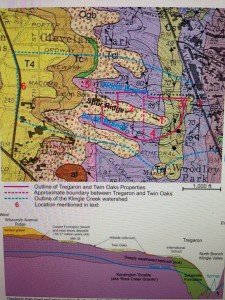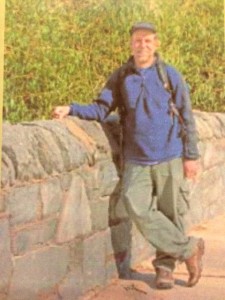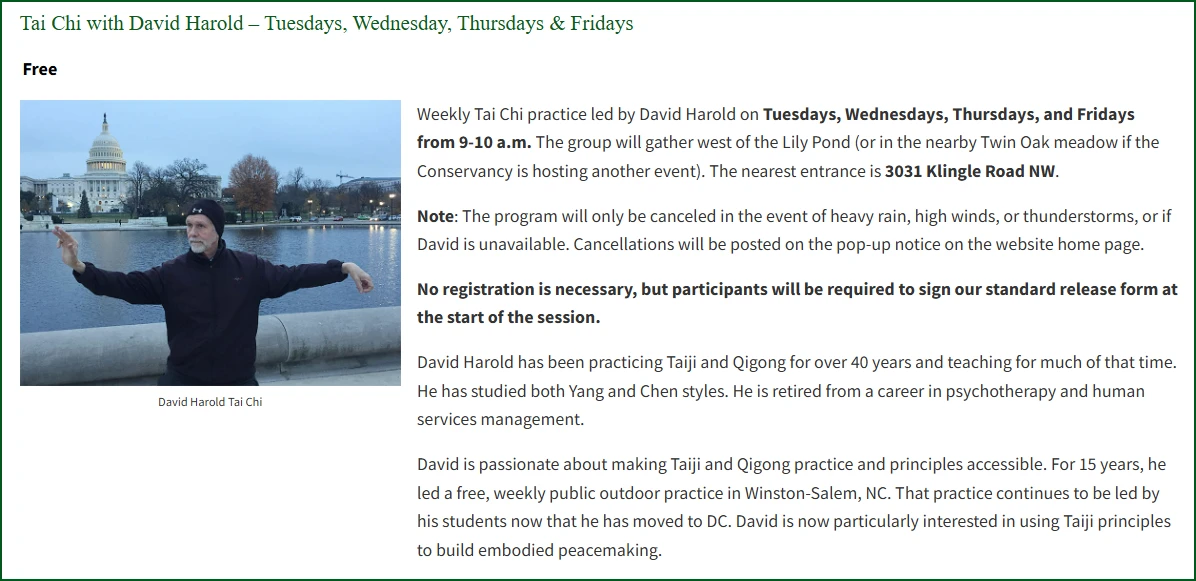 Tony Fleming, a professional geologist who grew up one block from Tregaron, guided a hike of Tregaron’s landscape on October 13th. Fleming is the author of the modern geological map of the District along with other publications about local geology and is very familiar with Tregaron. Below are excerpts from Tony’s program:
Tony Fleming, a professional geologist who grew up one block from Tregaron, guided a hike of Tregaron’s landscape on October 13th. Fleming is the author of the modern geological map of the District along with other publications about local geology and is very familiar with Tregaron. Below are excerpts from Tony’s program:
Tregaron is an incredible neighborhood resource. With its deep ravines, old woods, and elegant landscape architecture, Tregaron is singularly responsible for much of the environmental ambiance that defines this section of Cleveland and Woodley Parks. Tregaron is a veritable showcase of geologic and ecologic features and processes that include outcrops of some of Washington’s oldest rocks, unusually large crystals, an ancient channel of the Potomac River, architectural use of native building stone, a biologically diverse landscape, and many environmental issues related to the interface of water and infrastructure in the urban environment.

A description of the tour:
With its deep ravines, old woods, and elegant landscape architecture, Tregaron is singularly responsible for much of the environmental ambiance that defines this section of Cleveland Park. In 2006, the Tregaron Conservancy (TregaronConservancy.org) assumed responsibility for preserving and maintaining the natural and historical attributes of the property, the culmination of decades of effort by hundreds of residents to prevent the property from being developed and protect it in perpetuity.
Tregaron is a veritable showcase of geologic and ecologic features and processes that include outcrops of some of Washington’s oldest rocks, unusually large crystals, an ancient channel of the Potomac River, architectural use of native building stone, a biologically diverse landscape, and many environmental issues related to the interface of water and infrastructure in the urban environment. Join the afternoon tour to explore the natural features of the property, learn why they are significant and how they can be maintained, and discuss their relationship to the larger urban environment.
This leisurely loop hike will showcase a wide variety of natural features, landscape architecture, and environmental issues, with time for questions and discussion. Did you know that the local bedrock was not originally part of North America? That giant crystals of hornblende and staurolite occur on the property? Can you tell the difference between native plants and invasive non-native ones? Why is Klingle Road so flood-prone? The tour will highlight all of these topics and more!
The “earthquake walk” at the end of the day will look at examples of ancient and modern faults and their effects in Washington, D.C. This will be a loop walk down Klingle Valley to Rock Creek and the Zoo, and back via Connecticut Avenue and Macomb Street. We will visit the classic “Darton’s Fault” exposure, a quintessential example of a young, active fault.

